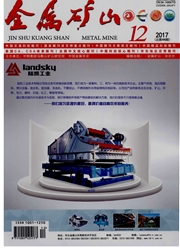

 中文摘要:
中文摘要:
通过对尾矿坝潜在滑动体的受力分析,考虑饱和尾矿动孔隙水压力和填筑期对坝体稳定性的影响,推导了尾矿坝地震时和地震停止时安全系数的计算式,探讨了动孔隙水压力对坝体地震时工作状态的影响。分析表明,地震作用下坝体工作状态主要受控于尾矿强度的降低和坝体惯性效应2方面;屈服地震系数显著地受到动孔隙水压力累积的影响,即随着振次的增加,坝体屈服地震系数越来越小。引入一个临界内摩擦角值来区分尾矿坝的最终破坏模式,即流动型破坏和滑动型破坏,并分别对2种模式的破坏机制及破坏过程进行了探讨。
 英文摘要:
英文摘要:
Based on stress analysis of the potential sliding mass of tailings dam, and considering the impact of saturated taifings dynamic pore water pressure and filling time on the dam stability, the calculation formula of safety factor for tail- ings dam in earthquake and post-earthquake had been derived, and the impact of dynamic pore water pressure on the work state of dam was explored. The analysis showed that the dam work state in earthquake is mainly controlled by the reduction of railings strength and the dam inertial effects; the yield seismic coefficient is significantly affected by the cumulative effect of the dynamic pore water pressure. With the increase of the vibration times, dam yield seismic coefficient is getting smaller and smaller. A critical value of internal friction angle was introduced to distinguish the ultimate failure mode of the tailings dam, called the flow-type damage and the sliding-type destruction. In addition, the failure mechanism and the failure process of the two modes were respectively investigated.
 同期刊论文项目
同期刊论文项目
 同项目期刊论文
同项目期刊论文
 期刊信息
期刊信息
